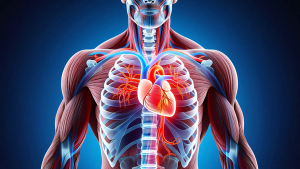Training in Pediatric Research
A review of Euromed Communications' recently published: Paediatric Clinical Research Manual
Paediatric Clinical Research Manual Edited by Professors Peter Helms and Peter Stonier (Euromed Communications, 2005), 700 pages, loose-leaf binder with annual update and two annual supplements, ISBN: 1750-063X, $684.00, Europe €520.00, ROW €535
My first thought on receiving Paediatric Clinical Research Manual to review was that its publication was particularly timely, given that the EU Regulation relating to research in children is due to become law late in 2006. However, as I read it, I felt that to have delayed its release until the final content of the Regulation was known would have perhaps been better, as several of the chapter authors were speculating about exactly what it would mean for pediatric research in Europe, and in some cases they were already out of date. It could be that the production of the book took longer than expected, accounting for what seems a strange time to publish such a work. The good news is that the format is ring bound, and I hope that the publishers plan a very prompt update for the relevant chapters.
Certainly the scope of the book is wide and the area very thoroughly covered. Topics range from clinical pharmacology to prescribing, and include regulatory issues in Europe, the United States, and Japan; ethics and law; study design and conduct; and how to make sense of it all. Overall I found it to be well thought out, with a very high level of valuable content.
Several authors described very clearly the particular difficulties and challenges of research in children, in particular the need to start anew with specifically designed protocols and not merely to adapt one already in use for adults. The creative ways in which one can avoid frequent blood sampling, bearing in mind both the small blood volume of a child and their hatred of needles, were explored in detail.
McLean's chapter was for me one of the most useful, describing the legal and ethical aspects of research in children. Her conclusion could stand for the whole book: "The need for paediatric research is irrefutable; the problems of conducting it are immense."
The chapter by Landgraf on health-related quality of life was excellent—well-written and argued. It was one of a few chapters that included a reading list of additional sources not already quoted—a very useful extra. More difficult to read, but a really excellent reference document, was the chapter by McElnay and Chaw—complete with 161 references!
There were downsides, too, quite apart from the timing of publication. I may be pedantic, but there was some gruesome mangling of English grammar ("the teeth...was"), some contradictions between chapters (2003 or 2004 for the relevant pediatric Regulation?), and more repetition than was perhaps needed. Several authors used "children are not small adults," as if their own invention (three times in one chapter), although one had the grace to use inverted commas! It may well be that each chapter is intended to be able to stand alone, but more use of "please refer to chapter X" and less repetition verbatim might have made for an easier read. Inaccuracies of fact such as the description of the Gillick case (relating to the competence of children to consent) were also irritating.
The thorny issue of equipoise was raised in more than one place, yet the definitions seemed to vary. One author claimed it meant that nobody could determine which study arm the subject would enter, and another that it meant that half the trials would favor one treatment and half the other. (My understanding is that equipoise means not knowing the outcome of a study during its design and conduct, but I am happy to be corrected.)
Most chapters in Paediatric Clinical Research Manual are superbly referenced, but there were some areas where a well-placed reference would have been helpful. In the foreword, for example, there were examples of deeply unethical trials. A reference would have allowed the interested reader to follow these up and read more. Nicholson too, while writing well and fluently, denies the reader support for his statements.
Overall this is a very good and helpful book of value for anyone working in drug research. We must all be comfortable with research in children, whether we want to or not; it is no longer possible to avoid it. There is a need for training within the industry and among clinician researchers, and this very readable and wide-ranging book—if kept suitably updated—is a very helpful source of support.
Jane Barrett, FFPM, is medical adviser and director of MedicoLegal Investigations Ltd., PO Box 490, Cambridge, CB3 6XB, United Kingdom, telephone and fax +44 (0) 1438 820000, email:
Articles in this issue
Newsletter
Stay current in clinical research with Applied Clinical Trials, providing expert insights, regulatory updates, and practical strategies for successful clinical trial design and execution.
Related Articles
 Everything to Know About FDA’s Push Towards Radical Transparency in 2025
Everything to Know About FDA’s Push Towards Radical Transparency in 2025September 17th 2025
 What Resilient Trial Design Means for Clinical Teams
What Resilient Trial Design Means for Clinical TeamsSeptember 2nd 2025
 FDA Expands Transparency With Daily Adverse Event Reporting
FDA Expands Transparency With Daily Adverse Event ReportingAugust 25th 2025




.png)



.png)



.png)
.png)
